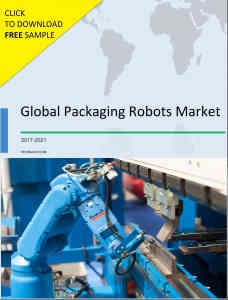Automation is pushing the boundaries of technology to superior new levels. It is a growing phenomenon of human labor being replaced by robots and automated machinery. The latter do not get sick or slack off unless something needs fixing, can comparatively work faster than humans, and their on-job performance is always consistent, productive and free of monotony induced errors.
 Thus, robotics is at the bleeding edge of the automation revolution that is increasing productivity across all sectors of the manufacturing world. Also, robotics is affecting every link in the supply chain, importantly packaging. In the latter sector, robots are associated from the beginning to end-of-line, handling products, picking and placing, case packing and palletizing. The packaging industry could very well pose as an example for the effective distribution of automation across the manufacturer’s production line.
Thus, robotics is at the bleeding edge of the automation revolution that is increasing productivity across all sectors of the manufacturing world. Also, robotics is affecting every link in the supply chain, importantly packaging. In the latter sector, robots are associated from the beginning to end-of-line, handling products, picking and placing, case packing and palletizing. The packaging industry could very well pose as an example for the effective distribution of automation across the manufacturer’s production line.
Why robots over humans in the packaging industry?
Robots can be seamlessly integrated into the packaging and shipping processes, reducing ergonomically hazardous work and speeding up the delivery times while meeting the dynamic packaging needs of retailers, distributors, and customers. The high-speed packaging robots are not just the gadgets for reducing costs, but also groundbreaking tools for achieving regular targets and operational safely, precisely and efficiently, while also trimming down the need for extended human intervention. Pointing out the major highlights:
1) Flexibility
The big application of robotics in packaging industry is no doubt flexibility. With just the touch of a button, line machinists can change the outline of a case or pallet load. This emphasizes the flexibility needed to satisfy trade customers who demand more and more customized loads, while not sacrificing the associated speed.
2) Accuracy
Robotics packaging systems like pick-and-place robots are outfitted with slim arms and a wide reach, sturdy repeatability and precise tooling, all of which empowers them to be extremely precise and accurate. This high precision capability makes them a suitable match for an array of operations in packaging and supply chain.
3) Consistency
Robot packaging machines are capable of improving the product quality as well as cycle time. As robotic movements are regulated, their outcomes are always standardized which consequently improves the quality of packaging. This consistency allows the packaging procedures to be operated seamlessly.
Summarily: With industries emphasizing on precision, speed, and quality in supply chain procedures, the demand and sale of industrial packaging robots is set to spike. It could establish an upward growth trend in less developed countries, and thanks to the escalating level of automation across diverse end-use industries, innovation and practicalities could unlock newer zones of application and usher in the 2.0 wave of the current phenomenon.



